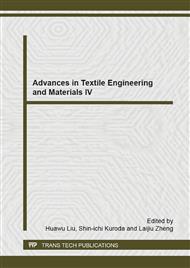p.373
p.378
p.383
p.387
p.391
p.395
p.400
p.404
p.410
Full Scale Evaluation on Anionic Polyacrylamide Applied in Ferric Flocs Sludge Treatment
Abstract:
The Polyacrylamide (PAM) is a frequently used flocculant for high concentration suspensions removal in water treatment characterized by the generation of large and dense flocs. In this paper, by using the anionic PAM as flocculant, a full-scale experimental study was carried out on flocculating ferric flocs sludge with pelleting flocculation blanket process under scale of 19~38 m3/h. The investigation aimed to optimum the dosage of the PAM and evaluate the application of the PAM in ferric flocs sludge treatment. The experimental results indicated that the increasing of PAM dosage could improve both outlet turbidity and thicken sludge concentration obviously, under the raw wastes concentration of 285~1022 mg/L, the system could achieve ideal operation effect with PAM dosage of 0.3~2.7 mg/L and treatment unit surface loading of 19~38 m3/m2·H. The investigation results also proved that there exists an approximately linear relationship between optimal PAM dosage and raw sludge concentration, that is, the increasing of raw sludge concentration would require synchronously rising of the optimal dosage. While the relationship between maximum surface loading and raw sludge concentration appeared negatively linear dependence, the maximum surface loading would decreased linearly with the increasing of inlet sludge concentration.
Info:
Periodical:
Pages:
391-394
Citation:
Online since:
October 2014
Authors:
Price:
Сopyright:
© 2014 Trans Tech Publications Ltd. All Rights Reserved
Share:
Citation:


